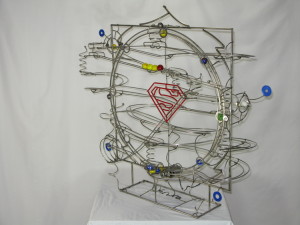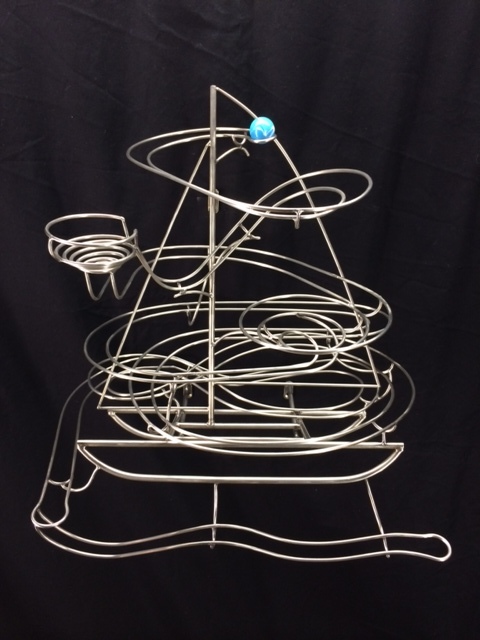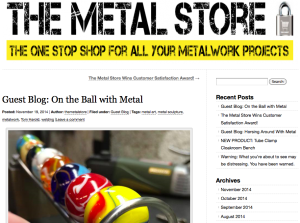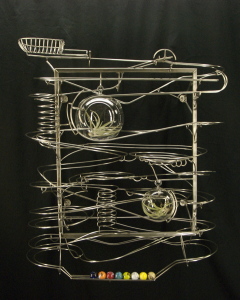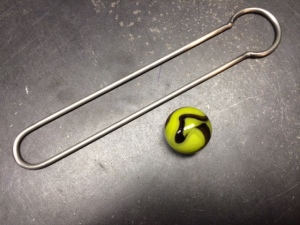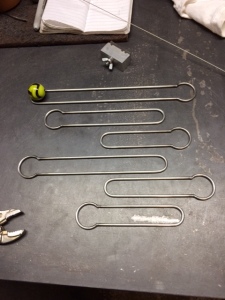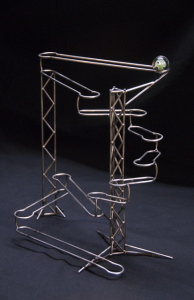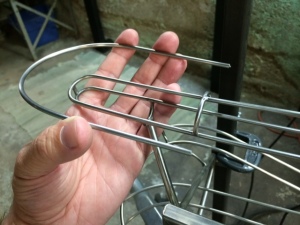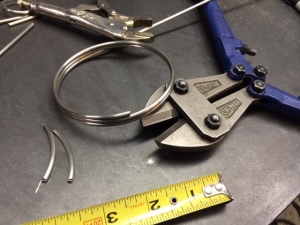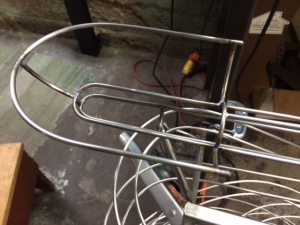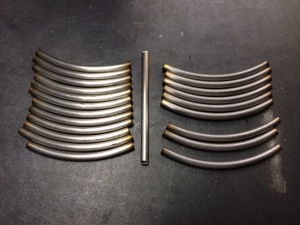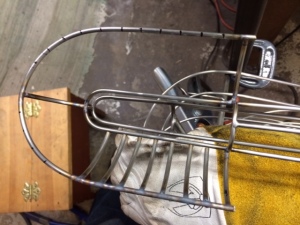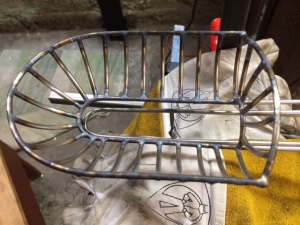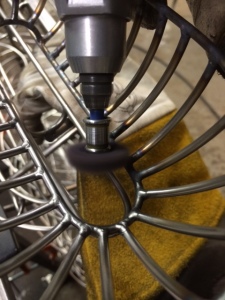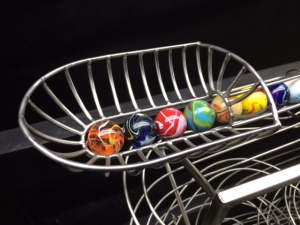It has been a tremendously productive past few months, and here is one more result of my decision to create one new piece a week for as long as possible. There’s been a change in plans, but I’ll fill you in on that later. For now, news and video on the new sculpture!
Titled “Dropping In,” I deliberately made an effort to create something different with this one. I’d had a thought around the beginning of the year for a method of creating track that would be rather quick, but also brought with it some limitations. However, limitations always translate into a pattern of thought like this: “Hmmm…I could do that, but that would mean I couldn’t do these other things. Huh. What if I couldn’t do those other things? That seems like a bad thing, but it just means I have to find another way of reaching my goal. If I can’t do X, then…then the challenge is to find a Y that will resolve the issue, and quite possibly be awesome in the process!”
This line of thinking worked its way around in my head for a while. Then “Lunar Walk” showed up on my work bench piece by piece, and I realized it was time to play around with some of those ideas. Turns out they worked pretty well! The sculpture looks really cool and is different from what you very often see with rolling ball sculpture. I enjoyed building it and its function. Even better, when other people got a look at it, they liked it as well. Success!
Once that piece was done I was ready to engage in my idea 100%. I was going to make a bunch of perfectly straight track sections in a whole batch and then…well, I didn’t know what, but there was only one way to find out!
Turns out it really was a challenge. Curves create a certain type of feel. They also allow for gradual changes in depth and speed. I was losing a lot of advantages in some areas, but it just made me more determined to figure out something cool with my idea.
I suppose I could have made my track sections bowed or wavy, but I really wanted to go with the idea of making this piece with nothing but straight, flat track. I could see something in my head that really wanted to take shape. Once I started laying the completed track sections out on the work bench, things really began clicking. The “steps” portion of the sculpture just seemed too perfect, and I was getting excited about the bigger challenge of keeping the track only gradually sloped so that the marble wouldn’t roll too quickly. Anyone who builds RBS will tell you that controlling roll speed at a slow pace is difficult!
When the basic track route was laid out I started welding some of the pieces together. I had no specific frame in mind, but once I started looking at the steps taking shape it snapped in place: strutted uprights! I immediately thought, “Oh, man, now you’ve done it. That’s going to take a LOT more time!” Remember, I was trying to get this piece done within one week. Just building one upright with struts is time-consuming, but here I had the idea for a triangulated piece. That was going to take even more than triple the time it took to make a single-sided one! Nevertheless, I knew the idea was perfect. I couldn’t NOT build it after having seen it in my head.
Hours of work followed. The uprights turned out great, but required a good deal of patience in setup and welding to keep them from warping horribly. The track worked with the frame visually even better than I could have hoped! Keeping the track sections slanted at just the right angle took additional patience and lots of adjustment, but once I had it working it was right on.
I’m very pleased with the end result on this one. I imagine that it is not to the taste of everyone, but I appreciate its uniqueness, and I’m sure there is someone else that feels this one is just right for them. I was also struck with the idea that the open area in the sculpture could be used as a mounting point for an award or a photograph that I could add at the client’s request. I know if I worked somewhere, say an engineering firm, and I was given this piece of art with a plaque affixed to it, I’d be a lot happier than if I got the usual brass and wood plaque from a trophy shop. This is one to remember! Plus, every single person coming in the office would want to play with it! How many other trophies can do that?
As mentioned earlier, my goal has been one new piece a week for several month’s worth of time. I have just received two new sculpture commissions, both of which have me extremely excited! These are larger works that will take some time to complete, so the small pieces will be on hold for a while, but I will continue to update here with other news as I have it.
Thanks to everyone who supports my work. I appreciate your efforts in forwarding my videos and putting up comments on various internet outlets. You help me do bigger and better things!

